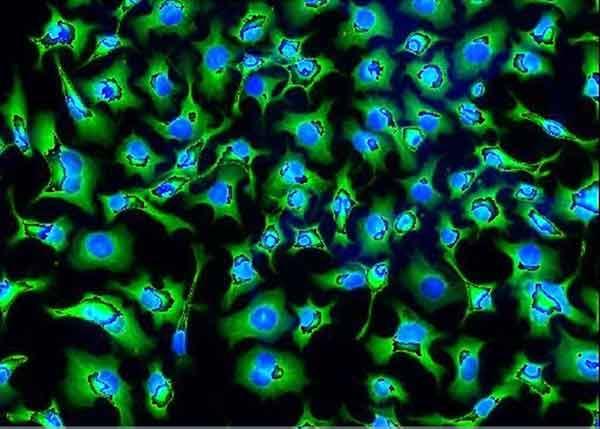New Drug for Pediatric Neuroblastoma Shows Promise in Preclinical Studies
, by NCI Staff
An international team of scientists has identified a possible new treatment target for pediatric neuroblastoma. Based on promising findings in animal models, the team is planning an early-stage clinical trial of a drug that inhibits this target in children with neuroblastoma.
The findings were published November 4 in Science Translational Medicine.
Neuroblastoma is the most common solid cancer in children younger than the age of 5. More than half of patients are diagnosed with a very aggressive, or high-risk, form of the disease that has proven difficult to treat, and half of those patients do not survive long term.
In the new study, the researchers found that a gene associated with aggressive neuroblastoma is reliant on another molecular partner and that targeting the partner may represent a novel way to treat these cancers.
To conduct the study, Glenn Marshall, MD, and Daniel Carter, Ph.D., of the Children’s Cancer Institute Australia, and their collaborators at Roswell Park Cancer Institute in Buffalo, NY, and several other institutions conducted a gene expression analysis of tumor samples from patients with neuroblastoma. The research team focused on a large group of genes associated with n-Myc, an oncogene that is a key driver of high-risk neuroblastoma. They discovered that a protein complex—a group of chemically linked proteins—called FACT promotes n-Myc activity and that n-Myc, in turn, activates the FACT complex. In this way, the two form a positive feedback loop.
“That circle of biochemistry is like an accelerator pedal in the cancer; it’s like lighting a fire,” explained Dr. Marshall. “Once these two proteins start working together, it spins out of control. And that discovery identifies a key Achilles’ heel of the cancer, from a therapy point of view.”
The Myc family of oncoproteins are commonly amplified or overexpressed in almost half of all human cancers, but have been difficult to target directly because the MYC and MYCN proteins are located in the nucleus of the cell, where they are largely inaccessible to drugs. In addition, researchers have struggled to crystallize MYC proteins for structural analyses, which has made it difficult to develop therapies that can target the proteins.
To get around the difficulties in targeting MYCN, the Australian researchers attempted to identify proteins that might be regulated by MYCN and for which an inhibitor exists. This effort led them to a protein called SPT16, which is part of the FACT complex. FACT has been implicated in cancer and its activity can be inhibited by drugs called curaxins.
The researchers found that targeting the FACT complex with a curaxin called CBL0137 provided an indirect route to targeting MYCN. Treatment of n-Myc-driven neuroblastoma cell lines and mouse models with CBL0137 disrupted the positive feedback loop, reducing MYCN expression and shrinking tumors in the mice.
The research team also showed that CBL0137 acted synergistically with chemotherapy. The FACT complexes typically help cells repair DNA damage. When chemotherapy induces DNA damage in the cancer cells, the absence of functional FACT proteins prevents the cells from repairing the damage, and thus induces cell death. In mouse models of n-Myc-driven neuroblastoma, CBL0137 strongly enhanced the cell-killing ability of several different chemotherapy drugs.
“Our findings have been the basis for the planning of a clinical trial for children with refractory cancers, such as neuroblastomas and other childhood cancers,” said Dr. Carter. “Using these FACT inhibitors could be an indirect way to target n-Myc not only in neuroblastoma but also in other cancers as well,” he noted. CBL0137 is already being tested in a phase I clinical trial in adults.
n-Myc interacts not only with FACT, but also with many other oncogenes, such as NF-kappa B, and tumor suppressor genes, such as p53, Dr. Carter added. So, by virtue of this network of genes, CBL0137 “could target multiple pathways that are deregulated in cancer,” he said.
